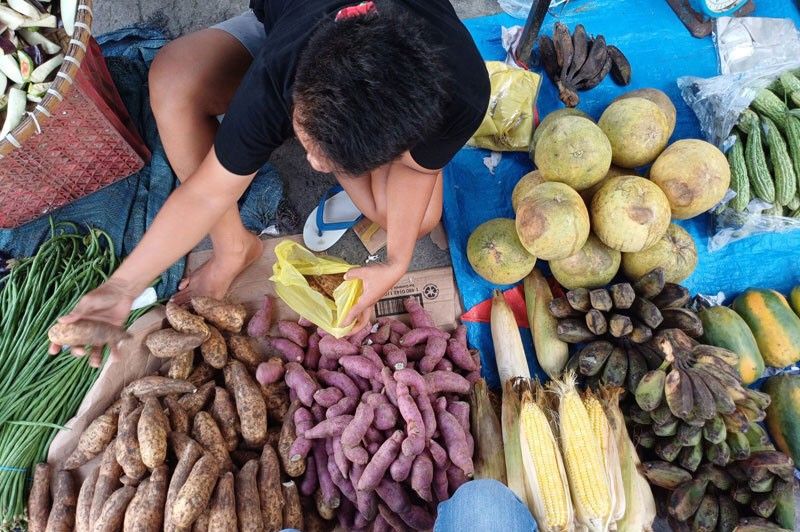Food inflation and poverty


Assuring food security is probably the simplest way of describing the responsibility of the Agriculture Secretary. But from our conversation, Secretary Kiko Tiu Laurel, Jr. knows his responsibility goes beyond making sure the country is adequately fed. He said he has to reduce poverty among farmers, the most impoverished sector of our society.
Agriculture accounts for 22 percent of the country’s workforce. PSA reports that the poverty rate among farmers is at 30 percent. These farmers are the foot soldiers in the war for food security and Secretary Laurel intends to help them.
Being a farmer can almost be seen as a life sentence to be poor. That’s why their children don’t want to be farmers. That’s why the average age of farmers today is fast approaching 60.
Why are farmers poor? There is a basic lack of access to inputs, credit, and markets. Our farmers are deeply in debt to traders who provide them the financing to buy seeds, fertilizers, and other essentials before the planting season starts. The same traders will buy at below market prices the produce and the farmers have no choice because they have to pay their debts, and they have no way of bringing their produce to market anyway.
Then there are other things, such as low education level of farmers and lack of access to new knowledge developed by farmers, researchers or agri-business companies. All these prevent the common farmers from being more productive.
After a farmer and his family consumes their share of the rice or other farm produce, they join the ranks of those who are considered consumers. When the planting/harvest season ends, the farmer must seek other means of earning a living… driving a tricycle or working as a construction laborer, or whatever work is available so he can earn something to buy his family’s food. Experiencing hunger is common.
Hunger and poverty in our farms are inherited by the next generations. Those who are lucky are able to break out of poverty through education, but that has become harder to do in recent years.
We have heard a lot in recent days about how we are kulelat among peer countries in reading, mathematics, and science tests. In addition to the poor quality of education provided by our public schools, our children are handicapped by weak learning and cognitive abilities because their malnourished brains failed to normally develop.
And once in the classroom, children are unable to concentrate with a hungry stomach. How do you deal with a room of more than 50 pupils at seven in the morning who are hungrier for food than for knowledge?
So, former NEDA Secretary Cielito Habito said that “until we are able to boost farm productivity and bring food prices down for the food security of our poor, our education crisis will remain as much a reflection of bad governance in agriculture, as much as in education.”
It is good to know Secretary Laurel knows that it is part of his job to meet the twin challenges of poverty and hunger among farmer families.
Of course, the Secretary’s report card in his first year will cover first of all assurance of rice supply amidst the El Nino drought, and secondly arresting the runaway food inflation we experienced during the first year of the President. PSA data show that year-on-year inflation rates, especially for rice, were relatively high in the last four months. Meanwhile, month-on-month inflation for rice rose from 4.9 to 8.4 percent in August.
De La Salle University Professor Marites Tiongco, in her presentation at a recent webinar conducted by the Philippine Institute for Development Studies (PIDS), explained that “historically, food inflation contributes most to headline inflation. High food prices translate to overall high inflation. Inflation in the price of meat and fish are the highest contributors to food inflation.”
Highlighting findings from a study of PIDS senior research fellow Roehlano Briones that the poorest households spend approximately 60 percent of their total income on food, Tiongco warned that rising food prices, if not abated, will lead to malnutrition and other health issues. Currently, one-third of Filipino children under five years old are stunted or have a height that is short for their age.
Tiongco recommended addressing high food prices by looking at all angles of the problem, including the production, market, legislative, and institutional constraints.
That’s exactly the agenda of the new Agriculture secretary. He has to effectively reconstruct the structure of the agricultural sector to make farming worthwhile for farmers. For example, Secretary Laurel is set to meet with Landbank officials to discuss how they can provide financing for farmers so they will not be forever in debt to usurious traders.
The Secretary is also thinking of how to more effectively provide government assistance to farmers, perhaps in terms of timely supply of farming inputs rather than cash that is often misspent. Government is also going to help farmers with post-harvest facilities – from cold storage to dryers and rice mills to minimize losses because of inadequate or absence of post-harvest facilities.
The new Agriculture Chief also has to study how legislation can help improve our ability to grow our food requirements. For example, land conversion has become an important issue as this decreases the amount of land available to grow rice. Of course, there is so much corruption too involved with land conversion.
The latest PSA data show that a total of 620,399.48 hectares were converted from 2012 to 2022 or an average of 62,040 hectares annually. Most of these or more than 600,000 hectares are irrigated lands. The largest conversions were in Central Luzon, a major irrigated rice growing area of the country. To be turned into subdivisions? This is terrible!
The need to consolidate land for more efficient and productive farming is another issue that will have to be studied with the Department of Agrarian Reform. The small farms of just a little over a hectare means the farmer will be engaged in subsistence farming, only to produce enough rice to feed his family, if at all.
So many things to do. So little time.
Boo Chanco’s email address is bchanco@gmail.com. Follow him on X or Twitter @boochanco.
- Latest
- Trending




























